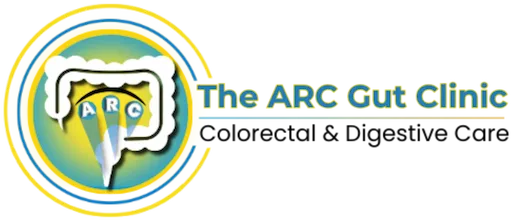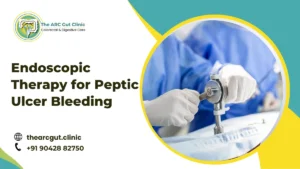Piles, commonly known as hemorrhoids, are swollen veins around the rectum or anus that cause pain, itching, and discomfort—especially during bowel movements. They often develop due to prolonged sitting, straining, or chronic constipation. While medication and dietary changes help, incorporating gentle exercise for piles can significantly ease symptoms and improve blood circulation in the rectal area. Simple daily movements can prevent recurrence, promote digestion, and support natural healing without invasive treatments.
Is Exercise Good for Piles?
Absolutely. Regular movement plays a powerful role in easing discomfort and promoting long-term healing. The right exercise for piles helps relieve pressure on the veins, supports healthy bowel movements, and strengthens muscles that regulate rectal function. However, the key is choosing gentle, consistent movements that enhance circulation without straining the pelvic region.
- Improves Blood Flow: Moderate physical activity, such as walking or yoga, stimulates blood circulation and reduces congestion in the rectal veins. This prevents swelling and inflammation that often lead to painful flare-ups.
- Promotes Smooth Bowel Movements: Exercise to cure piles permanently often includes core and pelvic exercises that regulate digestion and reduce constipation. This minimizes straining during bowel movements—a leading cause of hemorrhoid development.
- Reduces Pressure on the Rectal Area: The Best exercise for piles focuses on body alignment and controlled breathing, helping lower pressure on the abdomen and pelvis. This reduces discomfort during sitting or standing for long periods.
- Enhances Muscle Strength: Targeted movements like pelvic floor exercises strengthen muscles supporting the rectum and anus. This added support improves bowel control and reduces the likelihood of recurrence.
- Relieves Stress and Promotes Healing: Gentle workouts such as stretching or deep breathing lower stress levels, which can influence digestion and bowel health. A calm mind often leads to a healthier gut and faster recovery.

6 Best Exercises for Hemorrhoids & Piles
Regular physical activity can make a tremendous difference for those suffering from piles or fissures. The right exercise for piles not only promotes circulation but also strengthens the muscles around the rectal area, eases bowel movement, and helps manage pain naturally. Below are six highly effective exercises to cure piles permanently that can be done at home, even by beginners or those recovering from discomfort.
1. Pelvic Floor Contraction (Kegel Exercise)
Pelvic floor exercises for piles are among the most recommended routines for improving rectal muscle strength. Sit or lie comfortably, tighten the muscles around your anus as if you’re trying to stop passing gas, hold for 5 seconds, then release. Repeat 10–15 times, twice a day. These movements enhance blood flow, support the pelvic floor, and prevent further swelling. Regular practice also aids in reducing pain and improving bowel control in exercise for piles patient groups.
2. Deep Breathing (Diaphragmatic Breathing)
Deep breathing is more than relaxation—it’s an exercise to reduce piles symptoms by improving oxygen supply and reducing abdominal pressure. Sit in a comfortable position, inhale deeply through your nose, letting your belly expand, and exhale slowly through your mouth. Practicing for 5–10 minutes daily helps relax the pelvic muscles and enhances blood flow to the rectal region, reducing inflammation associated with piles.
3. Child’s Pose (Balasana)
This yoga posture is one of the best exercises for piles as it relieves stress from the lower back and rectal area. Kneel on the floor, sit back on your heels, and stretch your arms forward on the mat while lowering your forehead to the floor. Hold for 30–60 seconds, breathing deeply. The pose soothes strained muscles, improves digestion, and promotes calmness—key for those seeking exercise for piles and fissure relief.
4. Legs Up-the-Wall Pose (Viparita Karani)
This restorative yoga posture is a gentle exercise for piles treatment that reduces swelling and pressure in the rectal veins. Lie on your back near a wall and extend your legs upward to rest against it. Keep your arms relaxed at your sides and stay in this position for 5–10 minutes. This pose aids venous return, reduces congestion, and encourages circulation in the pelvic region, making it an effective exercise to cure piles permanently.
5. Wind-Relieving Pose (Pawanmuktasana)
As its name suggests, this posture helps relieve trapped gas and improves digestion—important for those suffering from constipation-related piles. Lie on your back, bring one knee to your chest, hold it with both hands, and gently press it towards your abdomen while breathing normally. Switch legs and then bring both knees together for a final stretch. This exercise for piles patient helps reduce bloating, regulate bowel movements, and minimize straining.
6. Bound Angle Pose (Baddha Konasana)
This seated yoga posture gently stretches the inner thighs and pelvic region, improving circulation around the anus. Sit with your spine straight, bring your feet together, and let your knees fall outward. Hold your feet with your hands and breathe deeply. Practicing pelvic floor exercises for piles like this daily helps improve flexibility and reduces pressure on swollen veins. Over time, it aids in natural healing and supports better digestive function, making it one of the exercises to cure piles effectively.
These six movements are gentle yet powerful when practiced consistently. Combined with a fiber-rich diet and proper hydration, they form a natural approach to managing hemorrhoids without invasive treatments.
Exercises to Avoid for Piles
While regular movement benefits the body, not all workouts are suitable for those managing hemorrhoids. Some activities can increase intra-abdominal pressure or strain the rectal veins, leading to pain or bleeding. Knowing which routines to avoid is just as crucial as choosing the right exercise for piles. Here are key movements that should be limited or modified for a safer fitness routine.
- Heavy Weightlifting: Lifting heavy weights, especially without proper form, significantly increases pressure in the abdominal and rectal regions. This can worsen swelling and irritation in hemorrhoids. If strength training is part of your routine, focus on lighter weights with more repetitions to reduce rectal strain and ensure safer results for an exercise for piles patient.
- High-Intensity Workouts: Activities like sprinting, jumping, or HIIT routines demand sudden bursts of effort, which can trigger excessive abdominal pressure. For individuals with piles, these movements may cause pain or bleeding. Opt instead for low-impact cardio, such as walking, cycling, or swimming—excellent exercise to reduce piles without triggering flare-ups.
- Squats with Weights: Although squats can strengthen the lower body, performing them with added resistance can strain the pelvic floor. The downward pressure increases discomfort and can worsen symptoms. If you must do squats, practice slow, controlled bodyweight squats instead—an acceptable alternative for those following a safe exercise for piles treatment plan.
- Crunches and Sit-ups: These popular core exercises exert direct pressure on the abdomen and lower rectal veins. This can intensify pain or cause inflammation for an exercise for piles patient. Replace them with gentle planks or pelvic tilts, which strengthen the core while minimizing rectal stress.
- Long-distance Running or Cycling: Extended sessions of running or cycling can create friction and pressure in the anal area, worsening irritation. Short, moderate sessions on a soft seat cushion or switching to walking may offer similar cardiovascular benefits while aligning better with safe exercise for piles practices.
Avoiding these high-pressure exercises helps protect sensitive rectal tissues and promotes healing. Once inflammation subsides, you can gradually reintroduce mild forms of activity with medical guidance.
Other Remedies for Treating and Preventing Hemorrhoids
Along with regular exercise for piles, a few lifestyle adjustments can greatly improve comfort and prevent future flare-ups. These remedies support digestion, ease bowel movements, and strengthen the veins around the rectum. When combined with consistent exercise for piles treatment, they offer a holistic, long-term approach to managing hemorrhoids naturally.
- Increase Fiber Intake: A diet rich in fruits, vegetables, and whole grains softens stool and promotes smooth bowel movements. Fiber reduces the need for straining, which is essential in preventing hemorrhoids from worsening. Pairing a fiber-rich diet with Exercises to cure piles like yoga and pelvic stretches helps regulate digestion effectively.
- Stay Hydrated: Drinking plenty of water throughout the day keeps stool soft and supports healthy digestion. Dehydration often leads to constipation, increasing rectal pressure. Combining hydration with Exercise to cure piles permanently ensures better bowel function and reduced irritation.
- Warm Sitz Baths: Sitting in a tub of warm water for 10–15 minutes, two or three times a day, can soothe itching, pain, and swelling. This simple remedy complements Pelvic floor exercises for piles, relaxing the muscles and improving circulation around the anus.
- Avoid Straining: Straining during bowel movements is one of the leading causes of hemorrhoids. Practicing mindful breathing and exercise for piles and fissure that promote relaxation helps reduce this urge. A calm, patient approach while using the toilet can make a significant difference.
- Maintain Healthy Body Weight: Excess weight puts added pressure on the rectal veins. Engaging in light activities like walking, yoga, or exercise for piles patient routines not only helps in weight management but also improves circulation and reduces recurrence risks.
- Establish a Regular Bowel Routine: Try to pass stool at the same time each day without ignoring the urge. This consistency prevents constipation and supports digestive balance. Gentle exercise for piles in the morning can stimulate bowel activity and set a healthy rhythm for the day.
These remedies, when practiced together, help prevent the recurrence of piles and support overall digestive wellness. Consistency in lifestyle, diet, and movement is the key to long-lasting relief.
When to See a Doctor
While gentle movement and exercise for piles treatment can greatly improve symptoms, medical attention becomes necessary when discomfort persists or worsens. Ignoring severe or recurring symptoms may lead to complications such as bleeding, infection, or chronic pain. Knowing when to seek professional care ensures timely treatment and faster recovery for every exercise for piles patient.
- Persistent Bleeding: If you notice bright red blood during or after bowel movements that doesn’t subside within a few days, it’s time to consult a doctor. Persistent bleeding could indicate advanced hemorrhoids or another underlying condition that requires medical evaluation.
- Severe Pain or Swelling: Mild soreness is common, but intense pain, throbbing, or swelling around the anus can signal a thrombosed hemorrhoid—a condition that needs immediate attention. Continuing exercise for piles treatment during this phase without guidance could worsen the problem.
- Changes in Bowel Habits: If you experience ongoing constipation, diarrhea, or incomplete bowel evacuation, it may suggest an imbalance in your digestive system. Medical advice can help identify causes and tailor safe exercise for piles routines suited to your condition.
- Prolapsed Hemorrhoids: When hemorrhoids protrude from the anus and do not retract on their own, they can cause significant discomfort. This condition often requires specialized care and should not be managed solely with home remedies or physical activity.
- Recurring Flare-Ups Despite Care: If symptoms return even after regular exercise for piles treatment, dietary changes, and hydration, it may indicate a chronic or severe form of hemorrhoids. Consulting a gastroenterologist ensures accurate diagnosis and a structured recovery plan.
Timely consultation helps prevent further complications and ensures that your self-care efforts, including exercise for piles, are safe and effective under medical supervision.
Conclusion
Living with piles can be uncomfortable, but small lifestyle changes—especially regular exercise for piles—can make a remarkable difference. Gentle movements improve blood circulation, ease constipation, and strengthen rectal muscles, promoting lasting relief without the need for harsh treatments. Whether it’s yoga, breathing exercises, or pelvic floor strengthening, consistency is key. Listen to your body, stay active, and combine mindful exercise with a balanced diet to restore comfort, confidence, and control.
Take the first step toward healing—move a little each day and let exercise guide your recovery.




